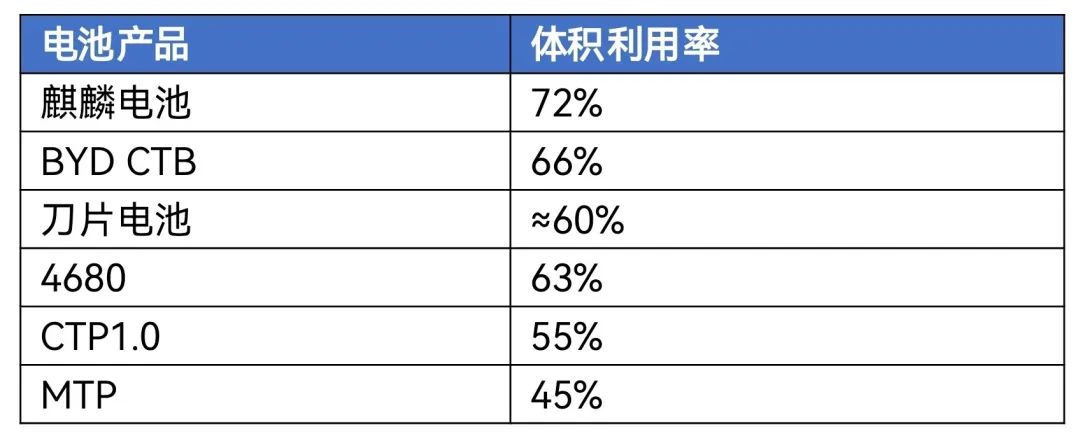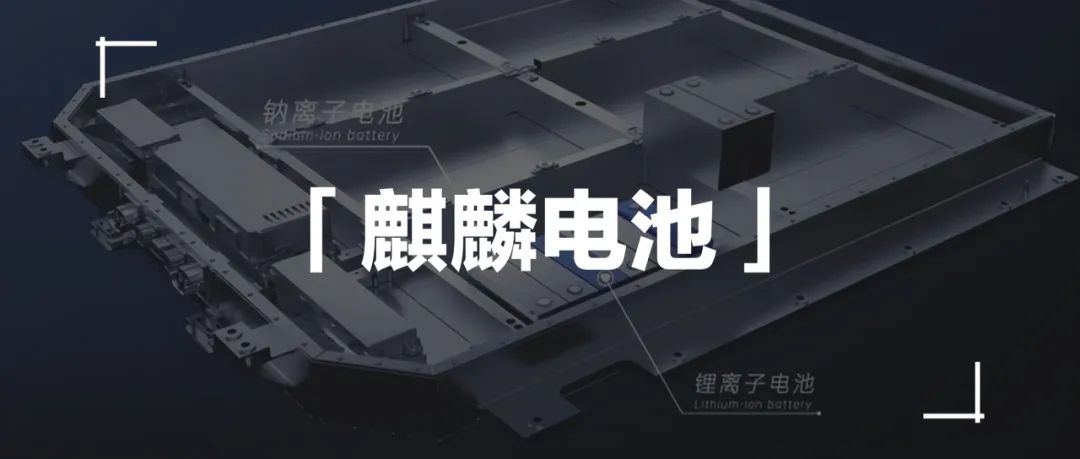Author: Lei Dianfawang Zhangsan
Before its official release, there have been many discussions in the industry about Kirin battery. Previously, Wu Kai, the chief scientist of CATL, mentioned at different occasions that the system pack efficiency of the Kirin battery is 13% higher than that of the 4680 battery. At the same time, there have been breakthroughs in fast charging, lifespan, and low-temperature performance, which have sparked great expectations.
After CATL released the Kirin battery on its official Weibo account, Li Xiang, the Chairman and CEO of the automobile manufacturer IDEAL, forwarded the announcement saying, “See you next year!”
We speculate that IDEAL’s pure electric vehicle model to be launched next year will be the first to use CATL’s Kirin battery.
It should be noted that Kirin battery is still optimized in terms of spatial structure and cannot truly change the material system.
From the design of the battery cell, the square shell can be made of ternary and iron phosphate, as well as sodium-ion batteries, so CATL’s Kirin battery can match more material systems.
Let’s talk about the highlights of Kirin battery below.
What are the highlights of Kirin battery?
“Automotive Electronic Design” describes a new feature of Kirin battery in its structure:
Currently, CATL’s square shell battery, including various postures, has been fully covered.
Vertical battery:
CATL VDA and 590 modules
CTP 1.0, CTP 2.0
Horizontal battery:
- Design with SAIC Mobility Collaboration and CATL
Inverted battery:
- CTP 3.0 Kirin battery
In other words, the poles of the Kirin battery are inverted and integrated on the bottom plate of the battery. What impact does this have? Let’s keep reading.
The four-minute video released by CATL continues its usual style of being concise and focused on the most noteworthy technical aspects. It is worth watching every frame to understand them.
In short, Kirin battery has three major features:
- A three-in-one elastic intermediate layer;
- Large-area water cooling of the battery cells;
- Bottom space of the shared battery pack.
Let’s first take a closer look at the most significant innovation: the three-in-one elastic intermediate layer. Kirin battery completely eliminates the independent structural beams, insulation pads, and water-cooled plates of the battery pack structure and replaces them with a three-in-one elastic intermediate layer arranged between each row of cells to achieve an integrated energy module.
Three-in-one elastic intermediate layer
From the exploded diagrams of several generations of battery packs showcased by CATL, the structure of Kirin battery looks much simpler and more straightforward.

How does such a simpler structure design achieve the required structural strength and thermal management ability?Below is the translated English text in Markdown format, with HTML tags retained:
Huawie’s Kirin Battery: Elastic Packaging and Large Water Cooling for Efficient Heat Management
Huawei has been developing its own battery technology for years, and its latest Kirin phone batteries have made an impressive leap forward in terms of power and performance. What sets the Kirin battery apart from the rest is its unique design that combines both elastic packaging and large water cooling for efficient heat management.
The original insulating pad placed between battery cells was replaced with a flexible and compressible solid made of porous polymer materials. This choice was made to accommodate the slight expansion that occurs during the constant charging and discharging process.
In other words, the new multi-functional elastic packaging replaces the insulating pad and structural beams, requiring both flexibility and stiffness. This is not just a matter of trade-offs, but a truly contradictory demand.
So why did Huawei take such a bold step?
Because the design has the advantage of combining the multi-functional elastic packaging with the battery cells to form an integrated energy unit, as described by Ningde Times.
In short, the elastic packaging and battery cells work together to greatly enhance the vertical support structure.
In addition, the interior of the packaging layer is also designed in a unique way. Although the official name of the design is “Micron Bridge,” the channels inside the layer are not square, but at an angle.
This angle is not known, but it can be imagined as holding a matchstick with two fingers. If the matchstick is perpendicular to the fingers, it is easily broken. But if there is a certain angle, pushing with fingers will cause the fingers to shift instead of breaking the matchstick.
Therefore, this elastic packaging design provides both support for the battery cells and can accommodate slight expansions. This not only ensures the long-term stable performance of the battery cells but also accommodates high-energy chemical materials, such as silicon.
Large Water Cooling for Battery Cells
In my opinion, this is the perfect combination of heat management and structural simplification.
For traditional box-shaped battery cells, the side space needs to be reserved for structural components and insulating pads, and the water-cooling components are usually placed at the bottom, with a cooling area limited to the bottom surface, so the actual cooling effect is greatly limited.
Although the water-cooling plate in the cylindrical battery system snakes around between the battery cells and contacts the large surface area of the cylindrical battery cells, due to the curvature of the cylindrical cell itself, the water-cooling plate can only cover less than 30% of the cell surface area, taking into account the top and bottom surfaces.
In Huawei’s battery design, the original structural components between the battery cells are removed, and the three-in-one elastic packaging layer is placed between adjacent battery cells, in direct contact with the large surface area of the battery cells. This directly increases the cooling area by several times, and the higher the battery cells, the more apparent the advantages over bottom cooling.
The larger cooling area directly affects heat management efficiency. But the benefits are not limited to faster heating at low temperatures or rapid cooling in case of abnormal battery temperature. More importantly, it supports real 4C fast charging.
At the battery level, there are two ways to achieve fast charging: one is to work on the materials to improve the fast charging capacity of the battery cell, but it can easily lead to compromises in overall safety, energy density, lifespan, and cost. The other is to improve the overall heat transfer efficiency, which is what Huawei is doing with their latest Kirin batteries.The Kirin battery has increased the heat exchange area by four times and improved the temperature control efficiency by double, which means it provides a good solution to the heating problem caused by the high voltage and large current from the 4C fast charging and perfectly matches the 800V fast charging promoted by major car companies.
Shared Bottom Space
From the video, it seems that CATL’s shared bottom space refers to the arrangement of the battery cells, poles, connections, and sampling units in the original bottom space of the battery pack by inverting the battery cells, thus saving 6% of the energy space in the longitudinal direction and further improving the system’s grouping efficiency.
This should be an industry-first, and this approach cleverly utilizes the safety space reserved at the bottom. However, this placement method necessitates the consideration of the reliability of the bottom space.
Nevertheless, with its possession of the largest amount of on-road vehicle data globally, CATL should have conducted a lot of simulation, emulation, and testing and possibly added some safety designs such as energy absorption and anti-compression to the bottom to ensure battery safety during driving.
What Does 72% Volume Utilization Really Mean?
When comparing various innovative structural technologies released in the industry, it is evident that the data of CATL is very impressive.

Breaking through record high volume utilization can bring several significant benefits:
- An easier increase in the driving range without the need to stack batteries or struggle with the tuning of the entire vehicle’s electrical system control.
- An increase in integrated efficiency, which enables vehicles with Kirin batteries to easily surpass 1000 kilometers of driving range.
- Higher volume utilization implies a lower cost per unit of electricity, thus reducing the cost of the entire vehicle.
In 2019, CATL launched its first-generation CTP high-efficiency grouping technology. Today, the company has broken this record with its Kirin battery technology.
Behind this achievement may reflect the innovative thinking of Chairman Zeng. Chairman Zeng’s idea is to use fewer structural components, larger integrated energy units, and achieve higher energy density, lower cost, and higher industrialization.
As a leading battery company, CATL’s innovation is based on its deep understanding of electrochemistry principles. Through the innovation in battery structure, it creates a more suitable working environment for the battery cells, taps into their full potential, and increases the overall revenue.
In addition, borrowing a phrase from the movie Kung Fu Hustle, “All martial arts are powerful, but speed determines the winner.”
CATL’s rapid innovation capability also benefits from its market-matching experience and feedback data, which can provide more input for the simulation and emulation verification in the structural design process, making the calculation results more in line with actual conditions.
In summary, the Kirin battery provides a new solution for improving battery performance and cost control, which will undoubtedly greatly improve the competitiveness of electric vehicles and be good news for the industry.
This article is a translation by ChatGPT of a Chinese report from 42HOW. If you have any questions about it, please email bd@42how.com.
